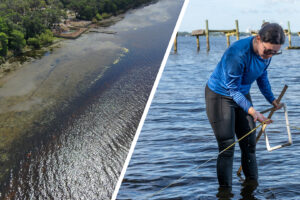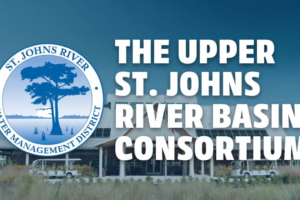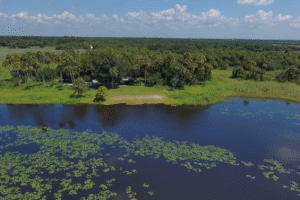Resiliency is woven into District’s day-to-day work
May 28, 2020

We are all familiar with the common definition of resiliency—the ability to bounce back following adversity. Resiliency efforts for our communities, our state and our nation are becoming ever more visible. Gov. Ron DeSantis placed additional focus on resiliency work in Florida when he appointed the state’s first ever resilience officer last year.
While most of us connect this type of resiliency with sea-level rise, it is much more than that. Resilience will allow our communities to recover quickly from disasters and to adapt to future conditions. Resilience relies on planning for future scenarios, analyzing data and risks, and then adapting accordingly.
Staff here at the St. Johns River Water Management District have quietly worked behind the scenes to address resiliency through the District’s core missions — water supply, water quality, flood protection and enhancement of natural systems. Like our leaders in Tallahassee, we believe it’s important to Florida’s residents and economy to have resilient communities, which is why it is a part of our day-to-day District activities.
We offer funding and technical assistance to help Florida’s communities prepare as coordination is a critical aspect of resiliency. Our Governmental Affairs Program staff work with local governments to address needs and provide District support. The District’s cost-share programs have partnered in many projects that include resiliency components, such as a project at Davis Shores in St. Augustine to retrofit stormwater outfalls to help alleviate flooding during storms. The District’s Real Estate and Land Management programs protect and strengthen natural infrastructure to help mitigate events such as wildfire, flooding and sea-level rise. This work includes restoration of historic wetlands for floodwater storage in the Upper St. Johns River, wetlands and floodplains restoration in Nassau County, and aiding local governments working to convert septic systems to central sewer systems.
You’ll find more information about the District’s ongoing resiliency work in a newly updated section of our website. We’ve provided a summary of our recent work, as well as resources to help our local government partners.
Sea-level rise, increased severity of tropical storm events, and shifting rainfall pattern are effects of a changing climate which is expected to impact our state in many ways. The St. Johns River Water Management District is committed to assisting our communities to become more resilient in order to plan for these changes and prevail.





